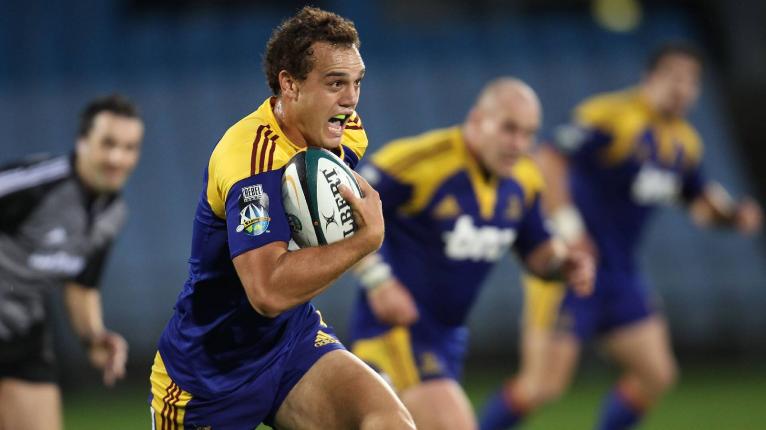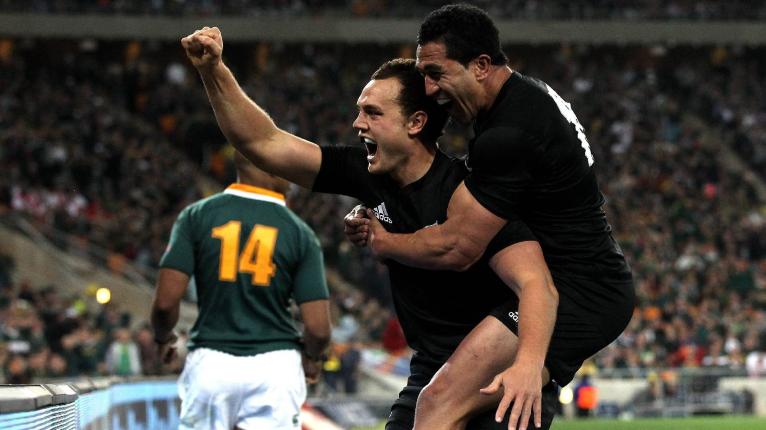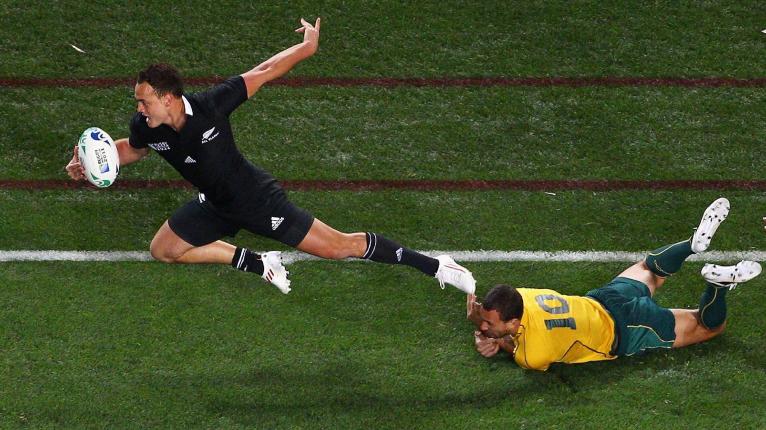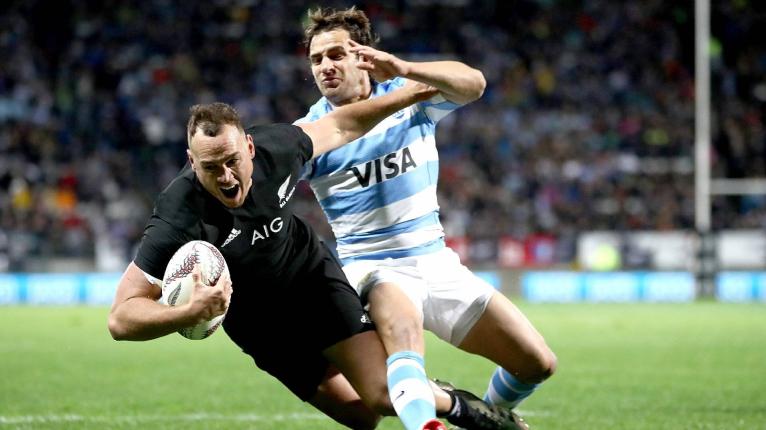From schoolboy supremo to World Cup star: The best three moments of Israel Dagg's career

It’s one thing for schoolboy rugby stars – and there are plenty of them – to be thrusted into the limelight thanks to their supreme athletic abilities that foreshadows the potential they wield within the professional arena.
It’s another thing to see them bust completely or fail to live up to the overhyped potential that was casted upon them in their teenage years.
It’s not uncommon to see a bright young star immensely overhyped far too early in their career and crumble under the pressure that comes with that excitement surrounding their ability.
Former schoolboy sensation Israel Dagg, however, can retire knowing he played to the best of his abilities throughout his 13-year professional career, largely reaching the overawing potential that he was expected to live up to during his time at Lindisfarne College.
Arriving at the Hawke’s Bay school on a scholarship, Dagg made a name for himself as a supremely gifted athlete, excelling in both rugby and cricket.
Despite infamously bowling a delivery at a speed of 143km/h as a 15-year-old and the attempts of Australian cricket star Brett Lee to lure Dagg to professional cricket, the former outside back committed himself to rugby after becoming just the second schoolboy after Danny Lee to be selected for the Hawke’s Bay NPC side in 2006.

What followed was a rapid ascend through the New Zealand ranks – New Zealand Schools, New Zealand under-19s, New Zealand Sevens – and after three seasons in the Air New Zealand Cup with the Magpies, his first Super Rugby contract came calling at the Highlanders.
It was in Dunedin where he really began to shine on a fully professional stage.
Emerging as a star player in a battling Highlanders squad that had only Jimmy Cowan, Tom Donnelly and Adam Thomson to rely upon for international experience, Dagg’s silky, elusive ball-running prowess became evident at Super 14 level, as did his under-used goal-kicking ability, making him an integral team member by the end of the 2010 season.

He had impressed so much, in fact, that he had earned himself a call-up to the All Blacks squad for that year’s June test series, starting at fullback in the year’s first test against Ireland at Yarrow Stadium in New Plymouth.
Making his international debut alongside long-time teammate Sam Whitelock, dual-World Cup-winners Ben Franks and Victor Vito, current Montpellier pivot Aaron Cruden and three-test wonder Benson Stanley, the All Blacks cruised to a 66-28 thumping over their Irish counterparts.

It was the start of an extensive and illustrious test career for Dagg, who scored two of his best tries later on that year against the Springboks in Wellington and then again in Soweto.
The Wellington wonder was a spell-binding piece of individual brilliance, where he received the ball as a first-receiver from a Cowan dive pass just shy of the South African 22 metre mark.
Surveying his options against a wall of green and gold with four teammates on his outside – all of whom were forwards – Dagg opted to try and deceive his opposition with a goose-step and a dummy after some lateral running before putting on the after-burners to burst through the South African defensive line, despite the best efforts of Schalk Burger.
From there, some exceptional footwork, great acceleration and lethal instinct was enough for the then-22-year-old to beat another four defenders and scorch over for the first of his 26 tries in an All Blacks jersey.
It was arguably the best he ever scored on the international scene, and it perfectly exemplified the natural ball-playing talent he possessed at the peak of his powers.

The Soweto stunner came in the return fixture came just over a month later, with the match locked up at 22-22 as the match entered its final minute.
Richie McCaw had just dotted down the score-equalling, unconverted try that was incredibly close to not coming to fruition in spite of a flurry of furiously determined defenders in the form of Jean de Villiers, Bryan Habana and Pierre Spies.
A short kick-off was initially re-claimed by the Boks, but the hosts surrendered possession on the opposition’s 10 metre mark thanks to a superb jackal by Conrad Smith.
Quick retention of the ball allowed Ma’a Nonu to slip out of a John Smit tackle – the South African skipper was playing in his 100th test – on the halfway mark, and a simple draw and pass sucked in Gio Aplon, freeing up acres of space for Dagg to prance 30 metres down the left-hand flank and score the match-winning try in front of a massive crowd of 94,000.
He reaped the rewards of the work done by his teammates, but if the Wellington try was the most spectacular try he ever scored for the All Blacks, the next try in his test career in Soweto was probably the most important as it helped steer the All Blacks to that year’s Tri Nations title.

While both pieces of play were immaculate and wonderfully taken, the moment that most people will look back on if asked to summarise Isreal Dagg’s talents will be his role in the outstanding Nonu try during the 2011 World Cup semi-final against Australia.
Desperate to qualify for their first World Cup final in 16 years and win their first title since 1987, it took a spark of genius from Dagg to add to the accurate goal-kicking of Piri Weepu to dismantle a rattled Wallabies side.
Parked just outside the Australian 22 metre mark inside the first six minutes of the contest, an Aaron Cruden cut-out ball found the hands of Dagg, who took the ball to the line at pace and produced a dummy similar to that of the one seen in Wellington against South Africa a year beforehand.
It was enough to speed past Anthony Fainga’a, and a firm left-hand fend on Rocky Elsom had the flyer inside the opposition 22 with just Quade Cooper left to beat as the last man.
A left-footed step towards the sideline drew Cooper out wide with him, and a diving tackle brought Dagg off his feet as he gravitated towards the sideline.
However, in a miraculous piece of instinctive yet accurate play, Dagg threw a beautiful airborne offload in-field as he looked destined for the touchline, with Nonu supporting on the inside to lap up the ball and storm on through to score what turned out to be the only try of New Zealand’s 20-6 semi-final win.
While the All Blacks back three was lauded for their ability to defuse intense aerial pressure in that clash, it was that short burst of brilliance that most will remember of both that clash, and of Dagg at the pinnacle of his career.

All three of these tries came during the infancy of Dagg’s 66-cap, seven-year-long international career, but they were all indicative of the supreme capabilities he possessed, and he unleashed them at the point of his career where he was performing at his best.
He remained a core member of the All Blacks squad up until 2015, when he famously dumped from that year’s World Cup squad after being succeeded as the country’s best fullback by Ben Smith.
A mighty international comeback in 2016 after quality Super Rugby campaign with the Crusaders portrayed the ambition and determination Dagg had to be successful, which ultimately prevented him from becoming an overhyped schoolboy, and instead allowed him to deliver what was expected of him by many.
However, he couldn’t help but succumb to a series of long-term injuries, with his test career concluding – unbeknownst to anyone at the time – at the same venue he started it in New Plymouth during a 39-22 win over Argentina two years ago.

His retirement announcement yesterday may have been unfortunately premature, but with a World Cup title, a Lions test series appearance, multiple Rugby Championships and Bledisloe Cups, and back-to-back Super Rugby crowns from a nine-season spell with the Crusaders, Dagg leaves the professional game with a CV that a multitude of opponents will be envious of.
It can’t be refuted that he hasn’t left his mark on the game, and the dazzling memories of Wellington, Soweto, and that sparkling World Cup semi-final run will forever act as reminders of the amazing career of Israel Dagg.
Watch – Israel Dagg retires:








































